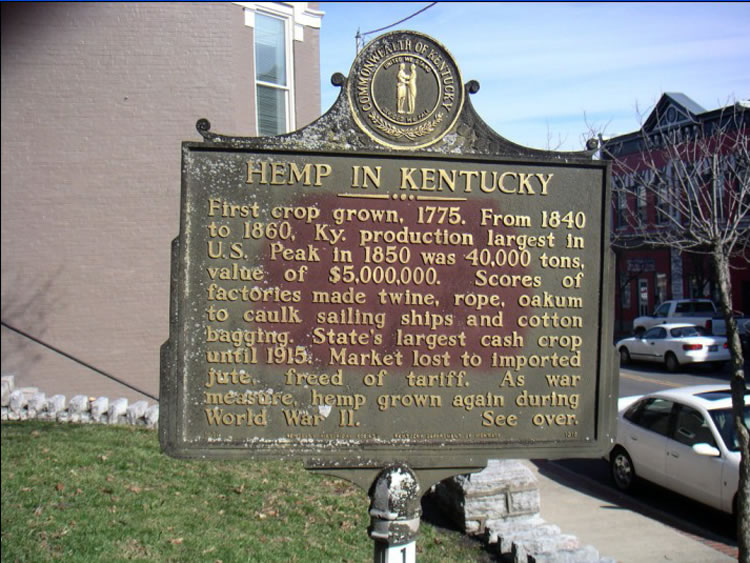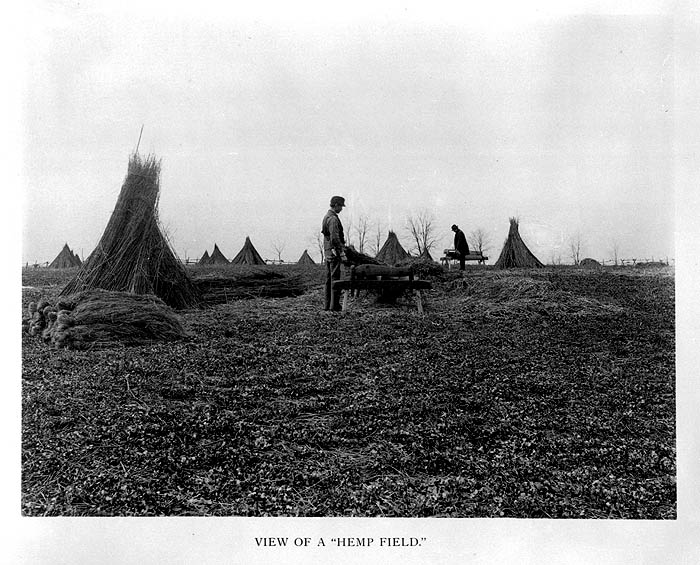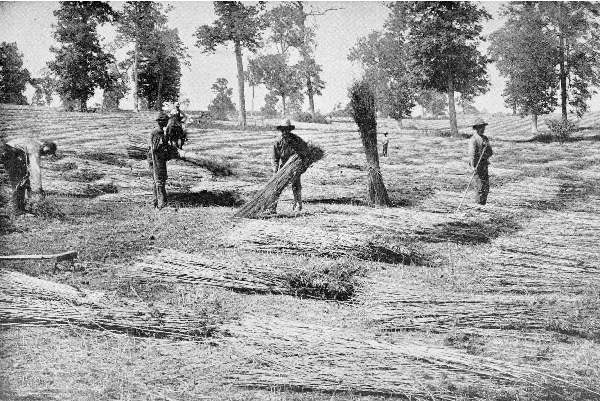
|
 |

|
|---|

According to the Kentucky Historical Society:
“The fertile soils of Kentucky’s Bluegrass Region (before the coming of the Marihuana Laws) made it the leading industrial hemp producer in the United States. Kentucky hemp was world-renowned for its height, hardiness, fiber yield, quality and rapid maturation and commonly yielded five to eight tons of dry stalks per acre. . . . . Between the 1770s – 1860s, over 160 Kentucky factories manufactured hemp products including rope, cloth and floor covering and employed several thousand workers . . . “ [1]Unfortunately, their website then goes on state:
“The availability of superior fibers such as Manila fiber and the growing market for tobacco as an alternative cash crop led to the decline of hemp production. . . “In the 1970s . . . the U.S. Congress designated hemp, marijuana and heroin as “Schedule 1” drugs, making it illegal to grow hemp in the United States without a permit. “Which rings of truth, but what actually happened was that:
With the conquest of the Philippines, American Farmers lost their trade tariff protection against cheap Philippine imports. And let’s face it, American Farmers (even back then) simply couldn’t compete with Filipino plantation workers who were earning (ah) a whole lot less then they were. And NO Congress did NOT designate Hemp to be a control “Schedule-1” drug (similar to Heroin). What actually happened was that Richard Millhouse Nixon (the trickster that he was), worded the Control Substances Act in such a way so the Narc’s of-and-by-themselves could proclaim anything a Control-one substance. And as for obtaining a permit – Forget it, they don’t issue those out – END OF STORY.

HEMP FOR VICTORY
Once more according to the Kentucky Historical Society:
“Reduced access to Manila from the Japanese-occupied Philippines caused industrial hemp to be grown as a substitute with Kentucky chosen as the site of seed production; planting 36,000 acres in 1942. A total of 60 million pounds of hemp fiber were produced before the project was discontinued at the end of the war. “Which was also kind of true, but what really happened (from a Reefer Madness Standpoint) was kind of a real SICK JOKE. Here were all these Narc’s running around talking about “The Weed of Madness” and how its use, or very presence for that matter, inspired young boys to go around bagging axes and going around chopping their parents to death, etc. Yet, now (thanks to the axes powers) we are expected to believe that it was so safe that even the 4-H’s were being asked to grow it for the war effort. [Talk about having it both ways]

But then why bother with the truth to people who simply use it when conviniant and ignore it when it's not. But then again, according to another website: [2]
Kentucky's first hemp crop was grown in 1775, and Kentucky went on to become the nation's leading hemp-producing state in the mid-19th century with peak production of 40,000 tons in 1850. U.S. hemp production declined after the Civil War, and almost all of the nation's hemp was grown in the Bluegrass region of Kentucky. Federal legislation passed in 1938 outlawed production of cannabis, including hemp, in the U.S. Hemp production in Kentucky and the U.S. ramped up during World War II as part of the war effort but fell again after the war and ended with the demise of a small hemp fiber industry in Wisconsin in 1958.

From days gone-by, before anyone noticed that people were running around jumping out of fifth story windows, grabbing axes , etc. --- Due of course to its evil influence.
==========
FOOTNOTES:
[1]- http://history.ky.gov/world-renowned-kentucky-hemp/
[2]- http://www.kyagr.com/marketing/history-of-hemp-in-kentucky.html
WANT TO KNOW MORE:
=====================
Due to space / download time considerations, only selected materials are displayed. If you would like to obtain more information, feel free to contact the museum. All our material is available (at cost) on CD-Rom format.
CONTACT PAGE
|
KENTUCKY REEFER MADNESS  BACK TO MAIN INDEX |